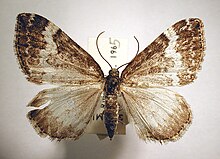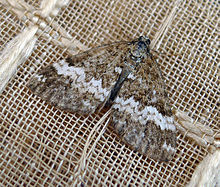
The scalloped oak is a moth of the family Geometridae. The species was first described by Carl Linnaeus in his 1758 10th edition of Systema Naturae.

Perizoma flavofasciata, the sandy carpet or sandy rivulet, is a moth of the family Geometridae. The species was first described by Carl Peter Thunberg in 1792. It is found in most of Europe and northern Africa and east across the Palearctic to the Urals and the Altai Mountains. The species prefers meadow valleys, floodplains, waterside areas, bushy meadows and gardens. In the Alps it rises to 1500 metres.
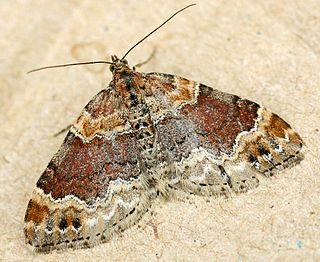
Xanthorhoe spadicearia, the red twin-spot carpet, is a moth of the genus Xanthorhoe in the family Geometridae. The species was first described by Michael Denis and Ignaz Schiffermüller in 1775.
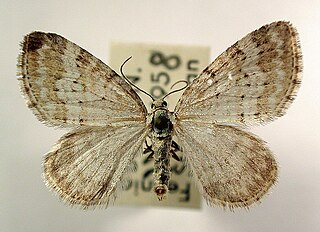
Perizoma albulata, the grass rivulet, is a moth of the genus Perizoma in the family Geometridae. The species was first described by Michael Denis and Ignaz Schiffermüller in 1775.

Perizoma alchemillata, the small rivulet, is a moth of the genus Perizoma in the family Geometridae. The species was first described by Carl Linnaeus in his 1758 10th edition of Systema Naturae.

Cyclophora albipunctata, the birch mocha, is a moth of the family Geometridae. The species was first described by Johann Siegfried Hufnagel in 1767. It is found in the Palearctic. The southern boundary runs westward along the French Atlantic coast and to the British Isles and north of the Alps. In the east, the species ranges to the Pacific Ocean. South of the northern Alps line, it is found at some high elevation areas and mountains. In the Pyrenees, the Massif Central, the southern Alps, the northern Dinaric Alps, in the western and northern Carpathians, in northern Turkey and the Caucasus. In the north, the range extends up to the Arctic Circle. In the Far East the nominate subspecies is replaced by Cyclophora albipunctata griseolataStaudinger, 1897.
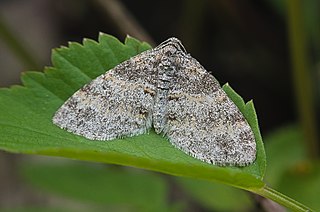
Lobophora halterata, the seraphim, is a moth of the family Geometridae. It was first described by Johann Siegfried Hufnagel in 1767. The species can be found in central and northern Europe and a few localities in southern Europe, Siberia, Amur, Primorye, Sakhalin and Japan.
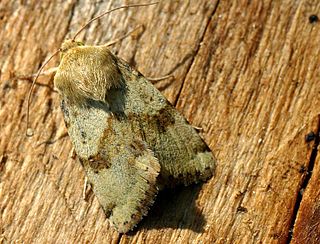
Heliothis viriplaca, the marbled clover, is a moth of the family Noctuoidea. It is found in Europe and across the Palearctic to Central Asia then to Japan, Korea and Sakhalin. In the south, it penetrates to Kashmir and Myanmar. As a migratory moth, it also reaches areas in northern Fennoscandia in some years. North of the Alps, both indigenous and immigrant individuals occur in certain areas. The heat-loving species occurs mainly on dry grasslands, fallow land, heathlands and sunny slopes and slopes and the edges of sand and gravel pits.
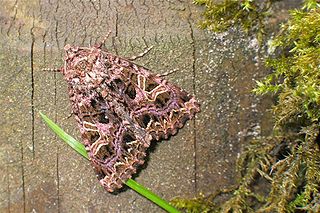
Sideridis rivularis, the campion, is a species of moth of the family Noctuidae. It is found in from the northern part of the Iberian Peninsula, through the whole of Europe. To the east, it is found in Central Asia and Siberia, up to Manchuria. To the south, it is found in the Mediterranean Sea region and parts of Asia Minor. In the Alps, it is found at up to 1,600 metres above sea level.

Hadena silenes is a species of moth of the family Noctuidae. It is found in Europe, Turkey, Israel, Iran and Turkmenistan.
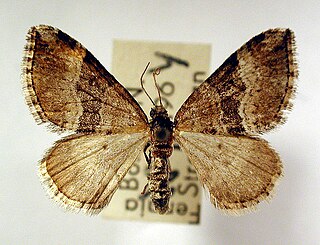
Perizoma bifaciata, the barred rivulet, is a moth in the family of geometer moths (Geometridae). It was first described by Adrian Hardy Haworth in 1809.

Mesotype didymata, the twin-spot carpet, is a moth of the family Geometridae. The species was first described by Carl Linnaeus in his 1758 10th edition of Systema Naturae. Its genus is sometimes included in Perizoma.
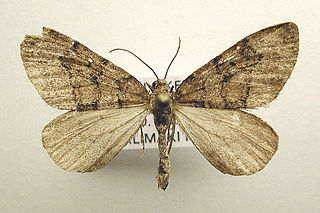
Thera cognata, the chestnut-coloured carpet or Durham juniper moth, is a moth of the family Geometridae. The species was first described by Carl Peter Thunberg in 1792. It is found in Europe, Asia Minor, the Caucasus and Transcaucasus.

Trichopteryx polycommata, the barred tooth-striped, is a moth of the family Geometridae. The species was first described by Michael Denis and Ignaz Schiffermüller in 1775. It is found in Europe and the Near East, east to the Caucasus, Transcaucasia, the southern Russian Far East (Primorsk) and Japan (Hokkaido).

Earophila badiata, the shoulder stripe, is a moth of the family Geometridae. The species was first described by Michael Denis and Ignaz Schiffermüller in 1775. It is found from most of Europe and North Africa to the Altai Mountains in the east Palearctic.

Chloroclysta miata, the autumn green carpet, is a moth of the family Geometridae. The species was first described by Carl Linnaeus in his 1758 10th edition of Systema Naturae. It is found from most of Europe to the Alatau in Central Asia.

Perizoma blandiata, the pretty pinion, is a moth of the family Geometridae. The species was first described by Michael Denis and Ignaz Schiffermüller in 1775. It is found from most of central and northern Europe to central Asia as far as the Khangai Mountains.
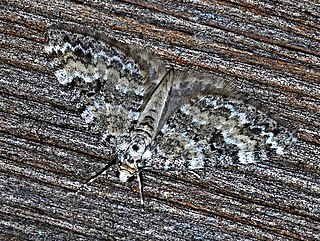
Perizoma minorata, the heath rivulet, is a moth of the family Geometridae. The species was first described by Georg Friedrich Treitschke in 1828.
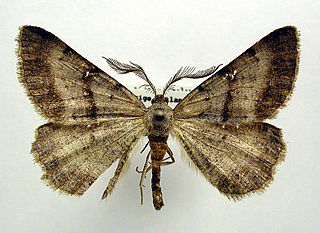
Selidosema brunnearia, the bordered grey, is a moth of the family Geometridae. The species was first described by Charles Joseph Devillers in 1789. It is found in central and southern Europe, Asia Minor, Transcaucasia and North Africa.
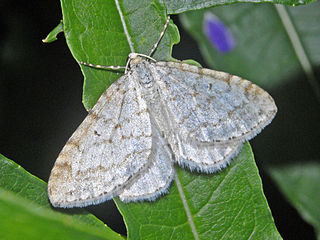
Mesotype verberata is a moth in the family Geometridae first described by Giovanni Antonio Scopoli in his 1763 Entomologia Carniolica.
